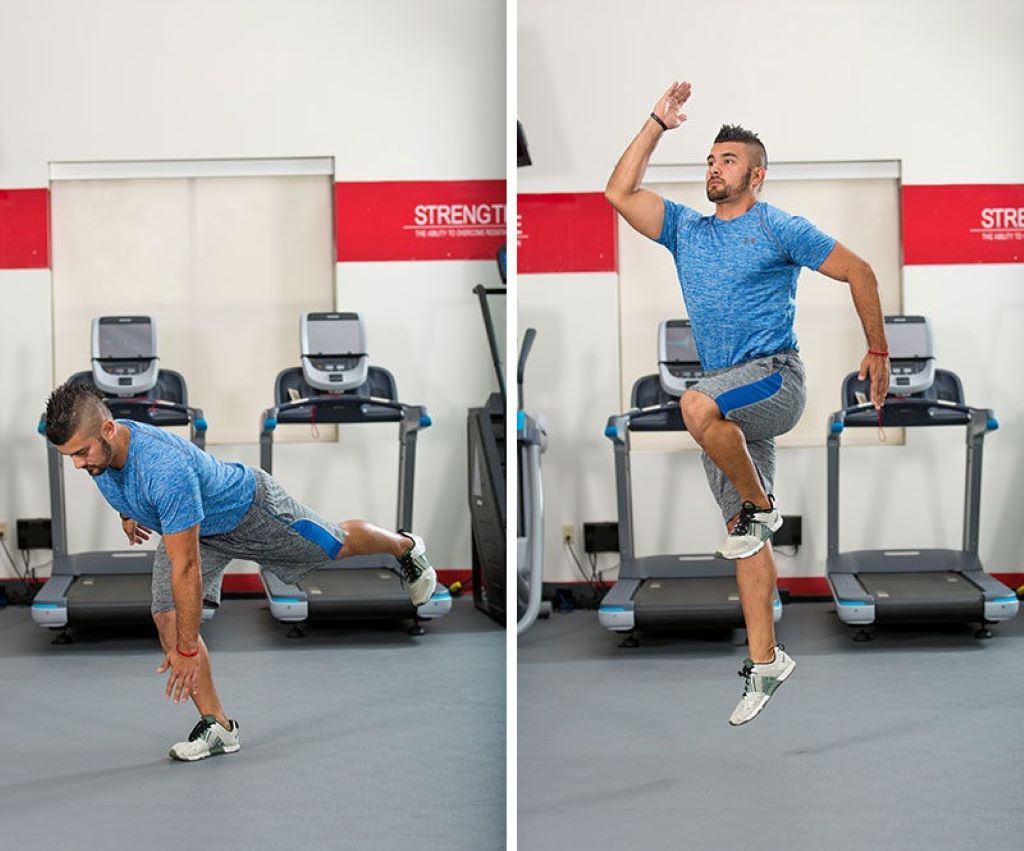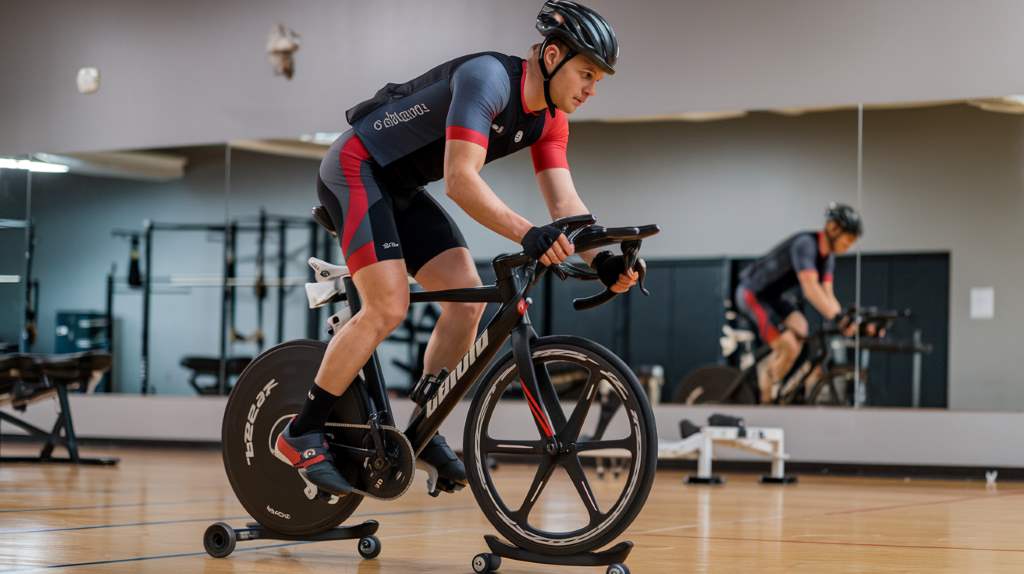When it comes to increasing your vertical jump, there’s no magic trick or quick fix. To see real, measurable results, you need a training program that combines science-backed techniques, discipline, and consistency. Plyometric gym workout is among the most effective methods for developing explosive power and increasing vertical leap. By incorporating these specialized exercises into your routine, you’ll be able to jump higher, run faster, and improve your overall athleticism. If you’re serious about mastering your vertical jump, explore E-Daily Workout for a customized approach to plyometric exercises that align with your goals.
Additionally, it’s essential to consider how your gym expenses play into your fitness journey. You may be able to ease the financial burden by learning how your HSA can cover gym expenses.
Why Plyometrics?
Plyometrics, often called jump training, involves explosive movements that help increase the power of your muscles. These exercises rely on the stretch-shortening cycle, where a muscle is rapidly lengthened and then quickly shortened to produce maximum force. This is why plyometric workouts are so effective for boosting your vertical jump.
Studies have shown that plyometric training can improve your vertical leap significantly. According to research from the Journal of Strength and Conditioning Research, athletes who incorporated plyometrics into their training saw a 10% to 15% increase in their vertical jump after just a few weeks of training. Additionally, these exercises not only help improve your jumping ability but also enhance your overall athletic performance, including agility and speed. Check out https://www.edailyworkout.com/exercise/how-your-hsa-can-cover-gym-expenses/ for how your HSA can cover gym expenses to make your fitness goals even more affordable.
Essential Plyometric Exercises for a Higher Vertical Jump
When it comes to plyometric exercises, not all movements are created equal. To maximize your vertical jump, you need to focus on exercises that target the muscles involved in explosive movement. Your calves, quadriceps, hamstrings, and glutes. Here are the key exercises that will take your jump to new heights:
-
Box Jumps
One of the most popular and effective plyometric exercises for increasing your vertical jump is the box jump. This exercise helps build explosive power in your legs and teaches your body how to generate force quickly.
How to Perform Box Jumps:
- Stand in front of a sturdy box or platform.
- Bend your knees and swing your arms back to prepare for the jump.
- Explode off the ground, swinging your arms forward for added momentum.
- Land softly on the box, ensuring your knees are slightly bent to absorb the impact.
- Step down and repeat for the desired number of reps.
-
Depth Jumps
Depth jumps are one of the most effective ways to improve your vertical jump. This exercise involves dropping from a height and immediately jumping as high as possible upon landing, training your muscles to react explosively.
How to Perform Depth Jumps:
- Stand on a box or platform that’s about 12 to 18 inches high.
- Step off the box and land softly on the ground.
- Immediately jump as high as you can after landing, using the rebound from the ground to propel yourself upwards.
- Repeat for 8 to 10 reps.
-
Jump Squats
Jump squats are another excellent plyometric exercise for developing power in your lower body. This exercise combines the benefits of squats with the explosive movement required for jumping, making it an excellent choice for increasing your vertical leap.
How to Perform Jump Squats:
- Stand with your feet shoulder-width apart, and lower your body into a squat position.
- Explode upwards, jumping as high as you can.
- Land softly back into the squat position, keeping your knees slightly bent.
- Perform 3 sets of 8 to 10 reps.
-
Lateral Bounds
Lateral bounds, or “skater jumps,” help improve your lateral explosiveness and enhance your ability to move quickly in different directions. This exercise also strengthens the stabilizing muscles around your knees and ankles, which are crucial for jump performance.
How to Perform Lateral Bounds:
- Start in a standing position, feet shoulder-width apart.
- Jump sideways to one side, landing softly on the outside leg.
- Immediately push off and jump to the other side, landing on the opposite leg.
- Perform 3 sets of 10 reps on each side.
Plyometric Training Routine for Maximum Vertical Jump
To get the best results from your plyometric workouts, consistency and progression are key. Below is a sample 4-week training routine to help you progressively increase your vertical jump:
Week 1-2: Foundation Building
Focus on building strength and proper form in each exercise. Perform 3 sets of 8 to 10 reps for each exercise, ensuring you’re landing softly and maintaining good technique.
Week 3-4: Intensity and Power
Increase the intensity by adding more sets (4 sets) and incorporating more advanced variations like higher box jumps or deeper depth jumps. Focus on explosive movement, maximizing the height of your jumps, and reducing rest time between sets to increase endurance.
Rest and Recovery
Plyometric exercises are demanding on your body, so rest and recovery are just as important as the workouts themselves. Give your muscles time to repair and rebuild by incorporating rest days into your routine. Adequate sleep, stretching, and foam rolling are all essential for maintaining peak performance.
Common Mistakes to Avoid
While plyometric training can be incredibly effective, it’s easy to make mistakes that can hinder your progress or lead to injury. Here are some common pitfalls to avoid:
- Overtraining: Too many plyometric exercises without adequate recovery can lead to fatigue and injury. Stick to the recommended frequency of 2 to 3 times per week.
- Poor Form: Proper technique is crucial. Always land softly to absorb the impact and avoid stressing your joints.
- Lack of Warm-Up: Always perform a dynamic warm-up before engaging in any plyometric exercises to prepare your muscles and joints for the intense movements.
Conclusion
Plyometric gym workouts are one of the most effective ways to improve your vertical jump. By focusing on explosive movements that target your lower body muscles, you can build the strength, power, and agility needed to jump higher and perform better in sports. With consistency and the right training program, you’ll be well on your way to mastering your vertical jump.
Read More:
Learning How to Play Basketball





